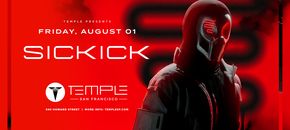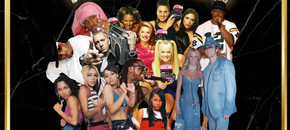Cowabunga, dude! The Teenage Mutant Ninja Turtles Turn 30 in San Francisco

Thirty years ago, a team of fearsome fighting animals sprang to life, emerging not from green ooze, as their later origin story would posit, but from the imaginations of two independent comic book artists working in their home-turned studio.
One night Kevin Eastman drew a turtle standing up, wearing a mask and holding nunchucks, and showed it to Peter Laird, who started adding other elements to the drawing. The humorous back and forth quickly resulted in the creation of the now-iconic Teenage Mutant Ninja Turtles.
Originally produced as a self-published black and white comic book, their creation became a hot property, attracting the attention of publishers, toy makers, animation studios and eventually even Hollywood.
The rapid rise and continued longevity of the fan-favorite franchise is chronicled in the new book “Teenage Mutant Ninja Turtles: The Ultimate Visual History” (Insight Editions) by Andrew Farago, who is the curator of San Francisco’s Cartoon Art Museum.
Featuring a host of rare art and information, the book is built around interviews with the army of people that would eventually go on to be part of the Turtle world.
Farago worked on gathering material for the tome for two years, but one could really say that he’s been prepared for almost three decades—he’s been a fan since he first encountered the Teenage Mutant Ninja Turtles as a child.
“My younger brother and I saw the commercials for the first mini-series on TV, before it was a regular weekly Saturday morning cartoon—we saw the commercial and went nuts,” Farago says.
“It was December of 1987, and we just became fans immediately; I started tracking down the comic books right after that,” he says. “then the toys came out and my brother and I were set for our birthday and Christmas wish lists for a couple years there.”
“From ’88-’90 we were part of that group that just kept that Turtle phenomenon going full blast. We ate the breakfast cereal, we saw the movies, we got the video tapes, the comic books and spent I don’t know how many quarters on the video games at the arcade. And we were no different than millions of other kids.”
Farago had done some work with publisher Insight Editions in the past, and about two and a half years ago, he was contacted by an editor who asked if he had any interest in the Ninja Turtles, and how he would approach the subject matter.
“I told him, obviously I’d start with Eastman and Laird, who are the creators of the series, and branch out from there,” Farago says. “Talking to them led to the first marketing guy that they hooked up with, and he’s the guy that got them the animation and toy deals. Then I talked to the animators and the toy makers, and it sprung up from there.”
After speaking with many of the people behind the comic books, cartoons and merchandising, Farago even scored an interview with Vanilla Ice, who of course starred in the second feature film, and performed his song “Ninja Rap” alongside the Turtles in the movie.
“He still has a passion for the Turtles, he sees that as one of the high points of his career,” Farago says. “He told me that ‘Ninja Rap’ actually gets the biggest reaction of anything he does in concert, he said it’s on par with ‘Ice Ice Baby.’”
One of the other important figures in the world of the feature films was Brian Henson, whose work at Jim Henson’s Creature Shop helped bring the Turtles to life up on the big screen.
“The high point was getting to interview Brian Henson, they did the effects for the first and second movies, and designed the costumes and did all the animatronics on the Turtle heads, and the Splinter puppet,” says Farago.
While working on the book, it became apparent that Farago should try to put together an exhibit at the Cartoon Art Museum based on his new connections in the universe of the heroes in a half shell.
“Over the course of writing the book, I met any number of collectors and artists and people who had some sort of affiliation with the Turtles, so it was kind of a no-brainer this summer to celebrate the book, and the 30th anniversary,” Farago says.
The exhibit, now on display through September, features the complete, original artwork for the very first issue of the comic book series, storyboards and animation cels from the 1980s cartoon series, toys, posters and other memorabilia.
“One of the really exciting things about working on the book was getting to meet fans, and I’ve got to say I severely underestimated how many fans are out there—I’ve found that there’s a huge audience,” Farago says. “I have a five-year old nephew who is crazy about the Ninja Turtles, and as far as he’s concerned, they’re this brand new thing made just for him, and that’s great.” .
A book launch and exhibit opening reception party takes place this Saturday at the Cartoon Art Museum, where fans will be able to buy the book and have it signed by Farago, check out the displays, and meet a variety of special guests, including Ninja Turtles comic artists Mark Bode and Ken Mitchroney, Mirage Studios staffer Molly Bode and IDW comic book editor and co-writer Bobby Curnow.
Extreme Pizza is sponsoring the event and providing the pies, but you may want to be careful to keep an eye on your food; rumor has it that the world’s most fearsome fighting team may be making a personal appearance.
If YOU GO:
“Teenage Mutant Ninja Turtles: The Ultimate Visual History”
Book Launch and Exhibit Opening Reception
Saturday, June 14
7-9 p.m.
Free
“Teenage Mutant Ninja Turtles” Exhibit
Open Through September 14, 2014
Cartoon Art Museum
655 Mission St.
San Francisco
www.cartoonart.org
Tue.-Sun.; 11 a.m.-5 p.m.
$3-$7; children 6 and under free







